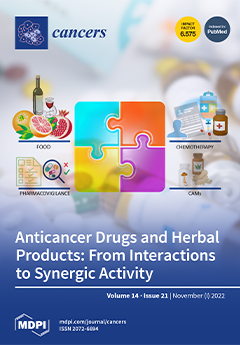Background: Lymph node dissection (LND) in primary treatment of differentiated thyroid carcinoma is controversial. The aim of our retrospective study was to analyse the risk factors of post-thyroidectomy complications and to assess the morbidity of lymph node dissection, especially in the central neck compartment, since prophylactic central lymph node dissection has not been proven to bring an overall survival benefit. Methods: We performed a retrospective analysis of postoperative complications from 1547 consecutive patients with differentiated thyroid carcinoma in an academic department of endocrine surgery over a period of 10 years. Results: A total of 535 patients underwent lymph node dissection, whereas the other 1012 did not. The rate of postoperative hypoparathyroidism was higher in patients with LND (17.6% vs. 11.4%,
p = 0.001). No significant difference in the rate of permanent hypoparathyroidism (2.4% vs. 1.3%,
p = 0.096) was observed between these two groups. A multivariate analysis was performed. Female gender, ipsilateral and bilateral central LND (CLND), parathyroid autotransplantation, and the presence of the parathyroid gland on the resected thyroid were associated with transient hypoparathyroidism. Bilateral CLND and the presence of the parathyroid gland on specimen were associated with permanent hypoparathyroidism. The rate of transient recurrent laryngeal nerve (RLN) injury (15.3% vs. 5.4%,
p < 0.001) and permanent RLN injury (6.5% vs. 0.9%,
p < 0.001) were higher in the LND group. In multivariate analysis, ipsilateral and bilateral lateral LND (LLND) were the main predictive factors of transient and permanent RLN injury. Bilateral RLN injury (2.6% vs. 0.4%,
p < 0.001), chyle leakage (2.4% vs. 0%,
p < 0.001), other nerve injuries (2.2% vs. 0%,
p < 0.001), and abscess (2.4% vs. 0.5%,
p = 0.001) were higher in the patients with LND. Conclusions: The surgical technique and the extent of lymph node dissection during surgery for thyroid carcinoma increase postoperative morbidity. A wider knowledge of lymph-node-dissection-related complications associated with thyroid surgery could help surgeons to carefully evaluate the surgical and medical therapeutic options.
Full article






